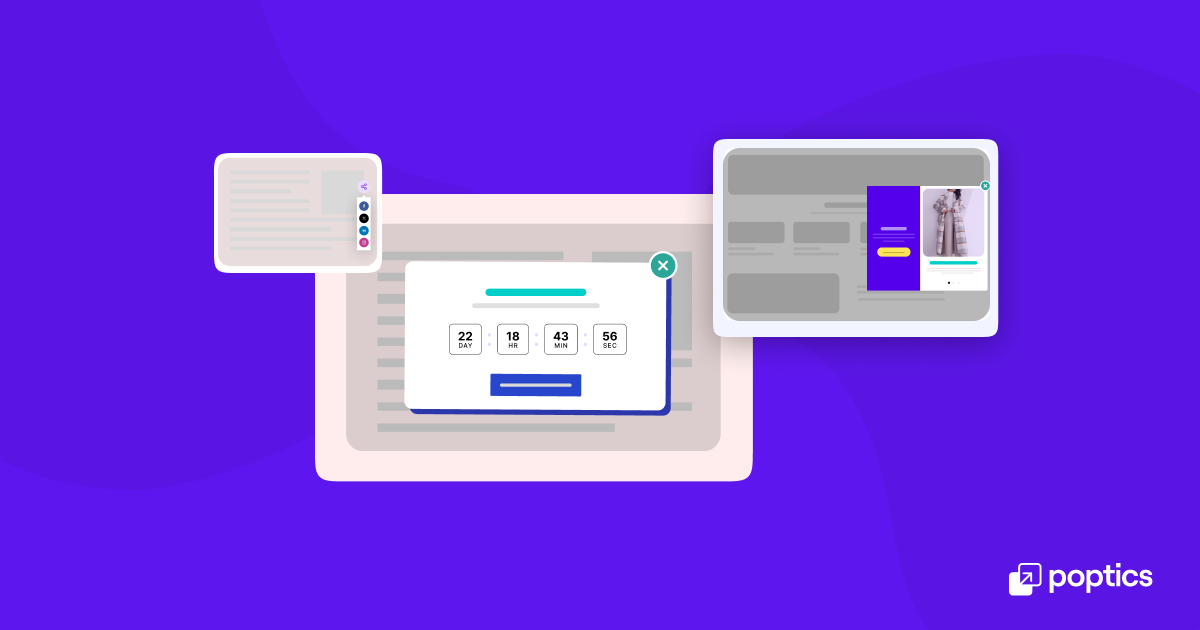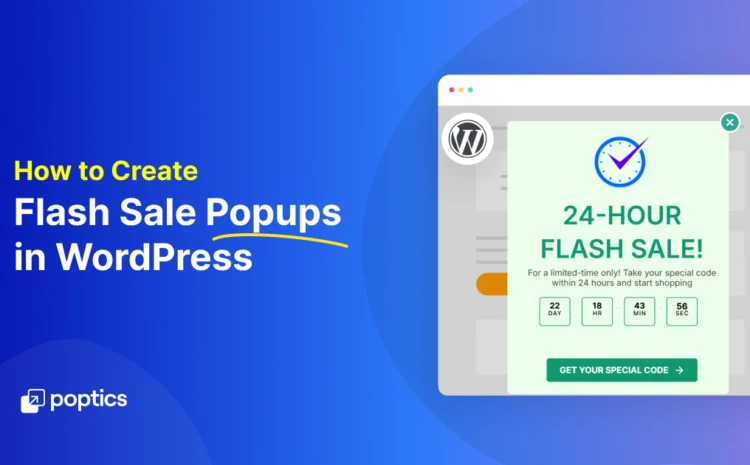The Psychology Behind Successful Popup Ads: How to Grab Visitor’s Attention

Marketers are constantly looking for ways to capture the attention of website visitors. Due to this, Digital marketing specialists prefer Pop up advertising as a fast and easy method of advertising products.
When popups are designed well, they are able to significantly increase lead generation, enhance user engagement, and improve sales conversion rates. So, if you know what psychology is behind successful pop-up marketing, you will be able to quickly grab the attention of your visitors.
As part of our discussion, today we will discuss how to leverage psychological triggers and urgency, as well as how to overcome popup failure and measure your success.
Table of Contents
The Purpose of Popups: Why They Matter

Popups serve a variety of purposes in the online marketing ecosystem. Whether you want to collect email addresses, promote product sales, or remind users about items left in their cart, popups are a powerful tool for getting user attention.
Basically, in a WordPress environment, popups are used to guide users toward specific actions, including subscribing to a newsletter, downloading a guide, or completing a purchase. The immediate visibility of a popup, combined with a strong call to action (CTA), can drive conversions that might not have happened otherwise.
👉 Highlighted part of Popups
- Lead Generation: Getting visitor information such as email addresses.
- Offer Promotion: Highlighting special deals, discounts, or limited-time offers.
- Product Demos: Encourage visitors to try out a product or service.
- Survey Distribution: Gathering feedback and insights from users.
- Social Media Engagement: Promoting and encouraging social media engagement.
Statistics show that well-designed popups can convert up to 11.09% of visitors, making them a powerful tool. However, there is a challenge when it comes to balancing popup advertising. It must appear at the right time, present a compelling offer, and do not interfere with the user’s experience in any way.
The Science of Attention: How Our Brains Respond

To understand how popups can grab attention, we first need to understand how attention works. Our brains are always getting a lot of information, so they are good at ignoring what’s not important. We focus only on what seems most important to us at the time.
Popups use things that naturally get our attention, like movement, bright colors, and eye-catching content. Remember, timing is most important. If a popup comes up too soon or at the wrong time, it might get ignored or even annoy the user.
For example, a popup that shows up when a user is about to leave can get attention without being too annoying. But a popup that shows up when the page loads, it might feel too early and make the user unhappy.
👉 Here are some key psychological principles to consider:
- Use contrast colors, bold fonts, or animations to set the popup apart.
- Catch visitors’ attention by doing something unexpected.
- Ensure the popup is directly related to the visitor’s interests or needs.
- Make sure the popup appears at the right time in the user’s journey.
The Psychology of Color, Design, and Copywriting

🌈 Color Psychology
The color of a message strongly affects how users see it. For instance, red is often linked to urgency and warnings. This makes it a great choice for promoting limited-time offers or sales that need quick attention. Blue color tends to create feelings of trust and calm. It works well for popups asking for personal information, like email addresses, as it helps users feel more comfortable. By understanding how colors impact emotions, designers can create popups that connect better with their audience and improve engagement.
🖼️ Design Layout
Beyond color, the design layout of a popup is equally important. If a popup is too messy with too much text or many buttons, users may close it without taking any action. Users are more likely to engage with popups if you use the right amount of white space, clear typography, and simple layouts. The design should guide the user’s eye to the CTA, ensuring they understand the offer with just a glance.
✍️ Copywriting
Words matter. A popup’s message needs to be short, clear, and action-oriented. You should avoid command text like “Submit,” use a CTA that conveys value, such as “Get Free Guide” or “Claim 20% Off Now.” Make sure your messaging highlights the user’s benefit.
Leveraging FOMO (Fear of Missing Out) & Urgency

One of the most powerful psychological motivators in marketing is FOMO, or the fear of missing out. People are naturally taking action when they believe they might lose out on something valuable. Urgency and scarcity tactics tap into this mindset by creating a sense of time sensitivity.
For example, countdown timers on popups can be highly effective. Whether it’s a flash sale that ends in a few hours or a limited-time offer, users are more likely to act when they feel pressured by time limitations. Scarcity messages, such as “Only 3 pics left,” also tap into this psychological trigger, making the offer feel more exclusive and prompting immediate action.
However, it’s important to use urgency carefully. If you use these tactics regularly, you can lose the trust of your audience and harm your brand’s trustworthiness.
👉 Considerations and Best Practices
- Be Honest: Never create false scarcity or deadlines.
- Provide Real Value: Offer should be genuinely beneficial to the user.
- Balance Urgency with Helpfulness: While creating urgency, also focus on how your offer solves the problem.
- Don’t Forget Your Audience: Do not offer more good deals on the same item to someone who has already purchased it.
- Give Well-Informed Decisions: Give users enough information to make an informed decision when it comes to high-value or complex offers.
Timing, Placement and Personalization: The Art of Successful Popups

The success of a popup isn’t just about what it says or how it looks; it’s also about when and where it appears. The placement of pop-ups in the wrong position or at the wrong time on the screen is more likely to annoy your visitors than displaying them at the correct time. Therefore, it is important to optimize the impact of timing and placement.
👉 Common timing strategies include:
- Exit-intent popups: Triggered when the user is about to leave the page.
- Scroll-triggered popups: Appear when the user has scrolled down a certain percentage of the page.
- Time-based popups: Show after a specific amount of time has passed, giving users time to adjust.
Generic popups are easy to ignore, but personalized ones feel relevant and engaging. Personalized popups based on user behavior, browsing history, or geographical location can significantly increase success. For example, showing a first-time visitor a welcome discount is more relevant than displaying a reminder to complete their purchase.
Popup Failures: How to Overcome Them

Popup failures happen when users become irritated by frequent or repetitive popups and start ignoring them altogether. If you want to avoid irritating your audience, make sure you balance the frequency of popups with the quality of your offer.
One strategy to prevent popup failure is to limit how often users see them. If a visitor closes a popup, avoid showing it again for a certain period. Additionally, popups with different designs, messages, or types can help keep users engaged without making them feel like they are being irritated by advertisements.
Remember, the goal is to enhance the user experience, not to disturb. By offering real value with each popup, you can maintain user interest without causing popup failures.
Key Metrics for Measuring Pop-up Ads Success
Once your pop-up ads are live, it’s important to measure the results. You should track the following metrics:
- Conversion rate: Analyze how many visitors convert.
- Click-through rate (CTR): Measure the percentage who clicked on the popup.
- Bounce rate: Check how many visitors leave the site after seeing the popup.
There are numerous tools available to track these reports, such as Google Analytics, Fluent CRM, Hotjar, and popup-specific tools like OptinMonster, Poptics, and many more. By analyzing the data, you can refine your popup strategy, adjusting the design, copy, or timing based on what performs best.
Conclusion: The Balance Between Engaging and Annoying
Successful pop up ads are all about balance. By leveraging the psychological principles of attention, urgency, personalization, and design, you can create popups that capture attention without disrupting the user experience. However, it’s essential to constantly test and refine your strategy to find the perfect balance between grabbing attention and maintaining a positive, engaging experience for your visitors.
The popup helps you convert, not prevent your visitors. Keep your users’ experience in mind, and you’ll see the true potential of popups realized in higher engagement and better results.
Get More Leads, More Sales, and More Conversations! 🎯
Try Poptics Popup Builder for WordPress

